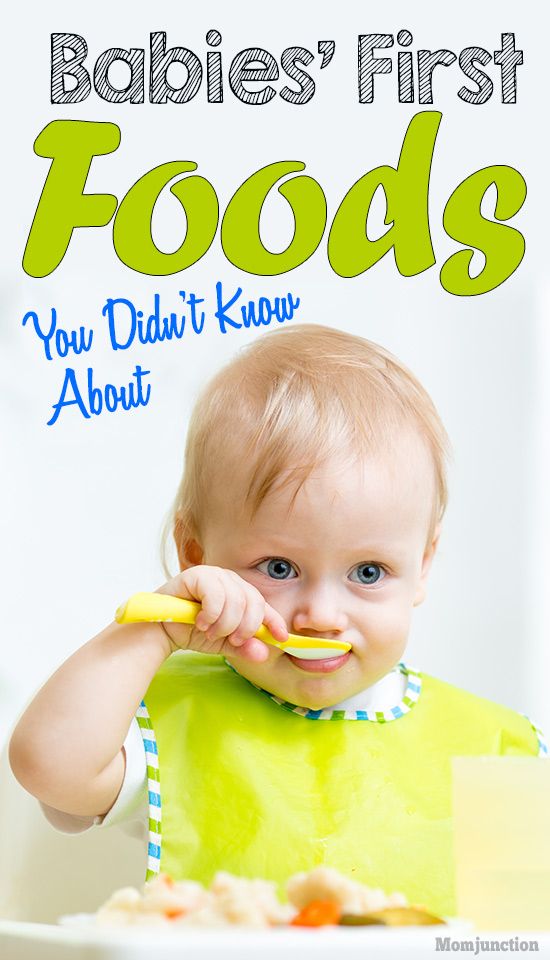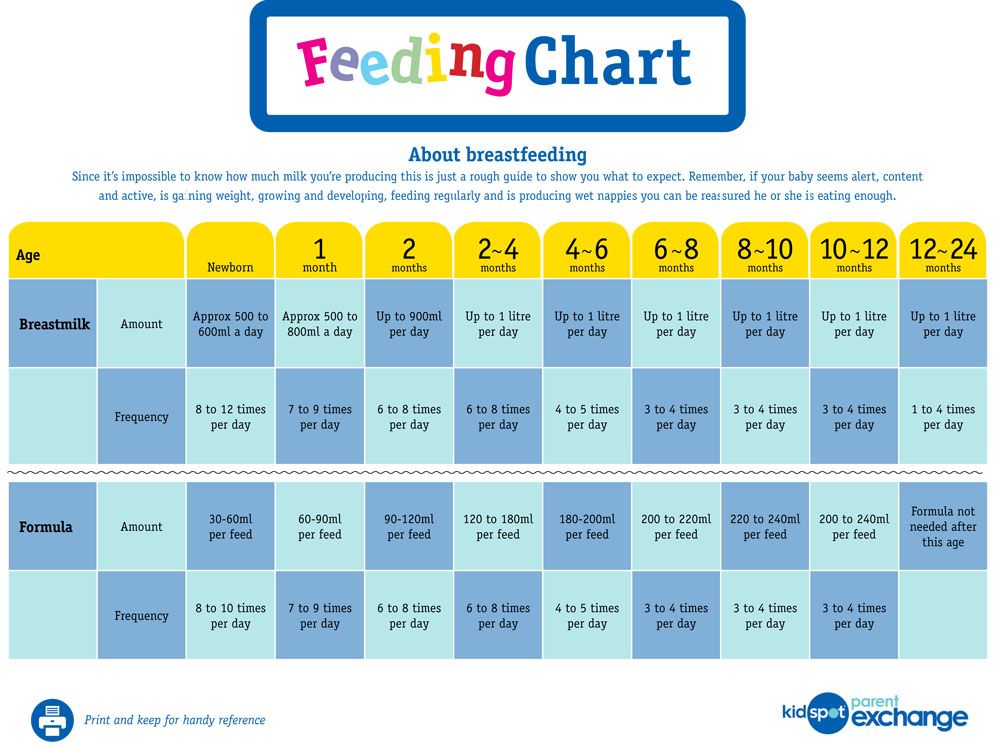What kind of finger foods can baby eat
Best Finger Foods for Babies: The Ultimate Guide
How exciting that your baby is about to graduate from mushy foods to finger foods! This is a big step in your little one’s development. However, you may be wondering when’s the right time to start finger foods, and how to tell that your baby is ready. We’ll answer all these questions and more, plus give you a list of the best finger foods to introduce to your baby first.
Introducing Finger Foods to Your Baby
So, when can babies eat finger foods? You can start to give your baby finger foods around the time they’re able to sit up independently and can bring their hands to their mouth. This may happen between the ages of 8 months old and 9 months old, but your baby may be ready a little sooner or later than this time.
Around this time, you may also notice that your baby is developing their pincer grasp and may be making chewing motions. These are both great indications that your baby’s ready for finger foods. Moreover, using their fingers to pick up foods will further develop your baby’s fine motor skills.
Some parents who adopt the baby-led weaning approach may start offering finger foods to their infants as early as 6 months old. This method skips spoon-feeding with solid foods and instead lets your baby take the lead in self-feeding with finger foods. Some believe this approach can decrease fussiness when it comes to introducing new foods, including finger foods, to your baby. Speak to your child’s healthcare provider if this method is something you’d like to try.
Giving your baby finger foods can help your little one learn to feed themself, just one step toward gaining independence. Self-feeding can be great fun for your baby. Even if much of the food doesn’t end up in your baby’s mouth, the fact that they’re exploring this new frontier is an accomplishment to be proud of.
First Finger Foods for Your Baby
As you begin choosing finger foods for your baby, check out the following ideas:
Steamed veggies like sweet potatoes, potatoes, carrots, green beans, peas
Soft, ripe fruits like bananas, berries, peaches (peeled), mangoes (peeled)
Whole-grain breakfast cereals (without nuts, clusters, or chunks)
Whole-grain pasta (cooked well)
Whole-wheat bread
Whole-grain crackers or wafers like teething biscuits
Soft meats like chicken
Cheese (mild)
Scrambled eggs.

Be sure that any of the above finger foods are cut into small pieces. You don’t want your baby eating a piece that’s too big to swallow. And, make sure to watch them while eating.
Finger Food Safety
During this time babies are more likely to swallow foods without chewing them, whether they have a few baby teeth coming in or they have no teeth. Avoid giving any finger foods that require a grinding action to chew (this type of chewing is typically mastered around the age of 4), as these may pose a choking risk. Offer finger foods that are soft, easy to swallow, and broken or cut into pieces that your baby cannot choke on. A good rule of thumb is that soft and mushy finger foods are safe for your baby. Small, round, coin-shaped, hard, chewy, crunchy, slippery, or sticky foods may lead to choking. Here are some foods to avoid offering your baby when they start on finger foods:
Peanut butter (in chunks)
Meat (in chunks)
Cheese (in chunks)
Raw veggies (in large chunks or round shapes), including celery sticks, carrot sticks, baby carrots, cherry tomatoes, and peas
Raw hard fruit (in large chunks or round shapes), including apples, pears, and grapes
Nuts (whole)
Seeds
Popcorn
Chewing gum
Candies (hard, gooey, or sticky)
Hot dogs or meat sticks.

There are ways you can still give some of the above foods while making them easier to eat and less hazardous to swallow. For example:
Grapes or cherry tomatoes, cut in half
Creamy peanut butter spread thinly on whole-grain bread that’s cut into small squares
Hot dog, cut lengthwise and then cut into small 1/2-inch pieces.
Note on Food Allergies
Medical experts once recommended that parents avoid feeding their babies eggs, fish, and peanut butter since babies may be allergic to these foods. However, it’s now recommended that you introduce these foods early—while keeping a close watch for any reactions—since this approach can help reduce your child’s chances of developing food allergies. Before introducing peanut butter or peanut products, consult with your baby’s healthcare provider. Your baby is more likely to be allergic to these foods if
food allergies run in your family
your baby is known to have an egg allergy
your baby has eczema.

The Bottom Line
It’s time to introduce finger foods to your baby when you see that they’re able to sit up on their own, start bringing their hands to their mouth, and can use a pincer grasp to hold onto small items, like finger foods. This development happens around the age of 8 or 9 months old, but you may see it sooner or later in your baby.
In the beginning, you’ll want to introduce finger foods that are soft and easy to swallow, since babies at this age tend to swallow instead of chew even if they have a few baby teeth. Think steamed veggies and soft fresh fruits. You can also introduce whole-grain bread, crackers, cereal, or pasta if they’re cut into small pieces. Chicken, mild cheese, and scrambled eggs are also great options when served in small pieces.
Avoid hard foods like raw veggies and fruits, as well as chunks of nut butter, cheese, and meat. Whole nuts and seeds are not recommended, nor are chewing gum, candies, hot dogs, or meat sticks. All these items can pose a choking hazard.
All these items can pose a choking hazard.
Transitioning to finger foods is a big step in your baby’s development and independence. Letting your baby self-feed with finger foods may be a bit messy at first, but you’ll both get the hang of it. Learn more about developmental milestones for your 9-month-old baby.
Best Early Finger Foods for Baby (With Tips, Visuals, and Recipes)
Use this list of safe, nutritious, and easy to eat finger foods for baby to help you know exactly what (and how) to offer at meals and snacks. Plus, find the best first finger foods, troubleshooting tips, and visuals of foods broken down by food group to keep things easy!
Finger Foods for Baby
After baby starts solids and is ready to move onto finger foods, you may feel a little confused by exactly what to serve and how to serve it. Which is totally normal because it can be scary to let baby feed themselves this way and we may not have any experience doing this—or we may have totally forgotten from our last kiddo!
This list of finger foods for baby will cover some great first finger foods to start with, then set you up with plenty of healthy options from each food group.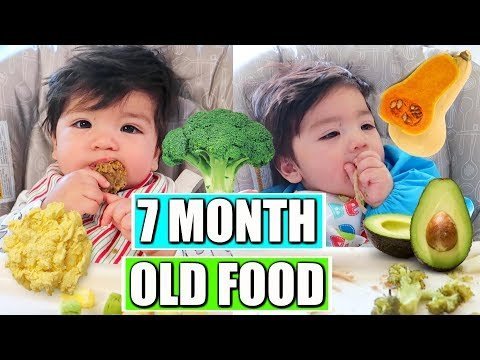
TIP: Find more info on starting solids here and the best foods to start with if doing baby led weaning or purees with baby.
Healthy Baby Food
I love sharing these ideas for baby food since they are easy to prepare and serve and because I know how hard it can be to continue to come up with flavorful and healthy meals and snacks for our little ones. Let me tell you, I’m on my third kiddo and it can be such a challenge to feed him during the chaos of parenting the rest of my crew! These foods are wholesome and nutritious—perfect for your baby.
TIP: I’m a big fan of SpoonfulONE, a company that offers the most complete way to introduce food allergens to our kids. They make mix-ins, puffs, and crackers that are yummy and easy for babies and toddlers to eat. Learn more about their pediatrician-approved baby foods here. (sponsored link)
Best First Finger Foods
When baby is around 9 months, you’ll notice that they’re able to pick up smaller pieces of food with two fingers.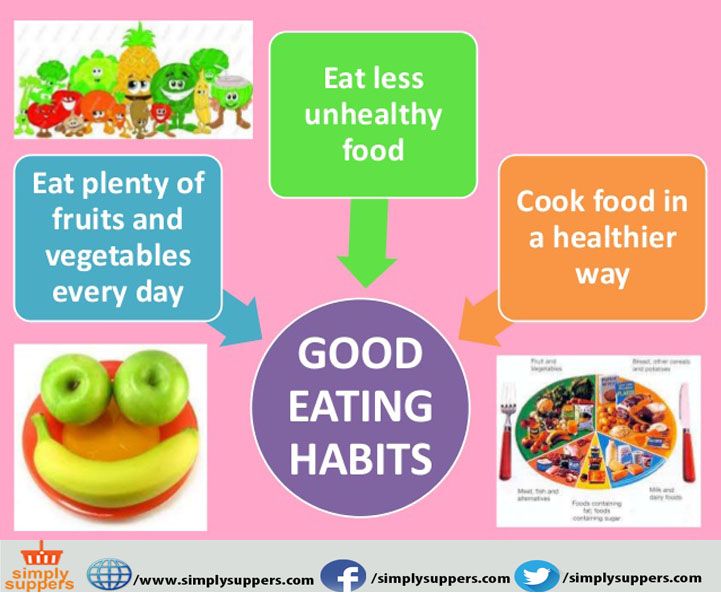 This is known as the “pincer grasp” and is a sign that they’re ready to start finger foods. To be clear, when I say “finger foods” I mean small pieces of food that a baby (or toddler) can feed themselves.
This is known as the “pincer grasp” and is a sign that they’re ready to start finger foods. To be clear, when I say “finger foods” I mean small pieces of food that a baby (or toddler) can feed themselves.
Here are some of my favorite ones to start with that are all super soft, safe to eat, and easy to pick up.
- Scrambled egg, broken up into small pieces
- Roasted sweet potato mashed and broken up into small pieces
- Fresh raspberries, broken up into smaller pieces
- Oatmeal, cooked according to package directions and allowed to cool
- Tofu, diced and sauteed lightly or steamed
- Ground beef, chicken, or turkey, broken up into small pieces or lightly mashed meatballs
- Shredded cheese or crumbled goat cheese
- Mashed sweet potato, in little pieces
- Peanut butter puffs
TIP: You can serve the tofu, ground meat, or meatballs in veggie puree from a pouch or a simple marinara sauce for extra moisture and flavor. Learn more about how and why to introduce peanut butter.
Learn more about how and why to introduce peanut butter.
Finger Foods for Baby: Fruits and Veggies
Some of my favorite early fruits and veggies to serve babies are:
- Mashed roasted sweet potato, broken up into small pieces
- Warmed frozen peas, slightly mashed if desired
- Roasted Zucchini
- Diced Roasted Sweet Potato or Butternut Squash
- Fresh blueberries, cut in half or quarters
- Fresh raspberries, broken into small pieces
- Banana, broken into small segments (they are less slippery this way versus slicing them)
- Avocado, diced and mashed slightly (be sure it’s ripe and very soft)
TIP: A good rule of thumb is to serve pieces of food that are about the size of a pea to start and soft enough that they are easy to squish between your fingers. This will be easy for baby to pick up and eat and will also reduce chances of choking.
Finger Food Ideas: Carbohydrates
Offering complex carbohydrates can provide fiber, a variety of textures, B vitamins, and more.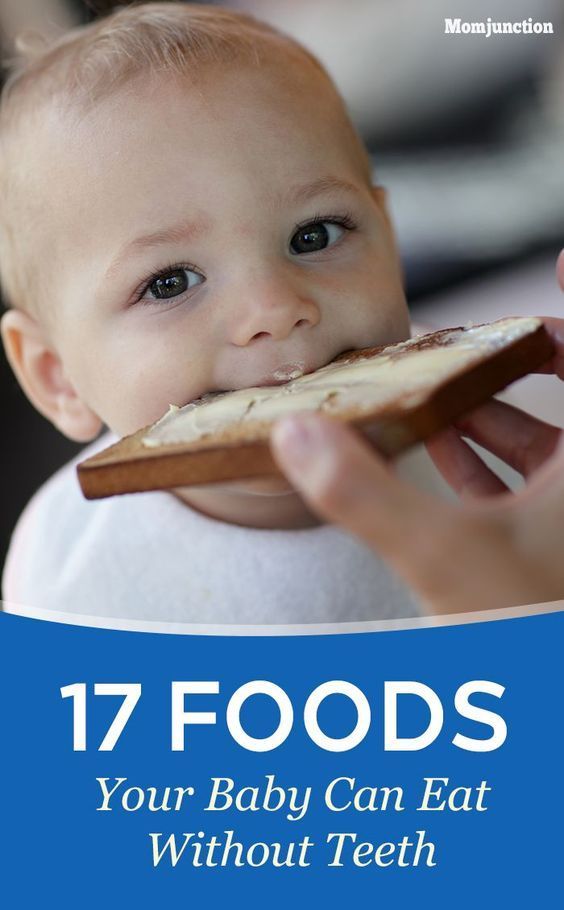 Try these with your baby.
Try these with your baby.
- Spinach pancakes (moisten with applesauce or plain yogurt if needed; this recipe is particularly moist and great for babies)
- Oatmeal, cooked according to package directions and allowed to cool
- Baby Puffs
- Peanut Butter Puffs
- Rice (it’s easiest if it’s in little clumps so baby can pick it up; this Coconut Rice or this Cheesy Rice are both good options)
- Baby Banana Muffin
- O cereal (soften in nondairy unsweetened milk or yogurt as needed)
- Baked Oatmeal, diced
Finger Food Ideas: Proteins
Offering proteins will continue to expose baby to a range of nutrients. These are my go-tos for babies newer to finger foods—and toddlers too.
- Shredded cheese (thicker cuts are a little easier to pick up)
- Tofu, diced and sauteed lightly or steamed
- Flaked cooked wild salmon
- Lightly mashed meatballs
- Shredded chicken, cut up finely (we love this Butter Chicken to share with baby)
- Ground beef, turkey, or chicken, broken into smaller pieces
- Lightly mashed beans
- Scrambled eggs, broken up into small pieces
- Diced egg muffins
I’d love to hear any questions you may have, or if you have foods that your babies enjoy that I didn’t include here.
 Chime in below in the comments!
Chime in below in the comments!Prep Time 5 minutes
Cook Time 5 minutes
Total Time 10 minutes
Author Amy Palanjian
Cuisine American
Course Baby Food
Calories 124kcal
Servings 1
First Finger Foods (choose 1-3 per meal)
- ▢ 1 Scrambled egg (broken up into small pieces)
- ▢ 1/4 cup Roasted sweet potato, mashed and broken up into small pieces
- ▢ 1/4 cup Fresh raspberries (broken up into smaller pieces)
- ▢ 1/4 cup Oatmeal (cooked according to package directions and allowed to cool)
- ▢ 2 tbsp Tofu (diced and sauteed lightly or steamed)
- ▢ 2 tbsp ground beef, chicken, or turkey, broken up into small pieces or lightly mashed meatballs
- ▢ 2 tbsp shredded cheese or crumbled goat cheese
- ▢ 1/4 cup Mashed sweet potato (broken into little pieces)
- ▢ 1/4 cup Peanut butter puffs
Fruits and Veggies
- ▢ 1/4 cup mashed roasted sweet potato (broken up into small pieces)
- ▢ 1/4 cup warmed frozen peas
- ▢ 1/4 cup Roasted Zucchini
- ▢ 1/4 cup diced Roasted Sweet Potato or Butternut Squash
- ▢ 1/4 cup blueberries (cut in half or quarters)
- ▢ 1/4 cup raspberries (broken into small pieces)
- ▢ 1/4 cup banana slices (broken into small segments—they are less slippery this way versus slicing them)
- ▢ 2 tbsp avocado (diced and mashed slightly—be sure it's ripe and very soft)
Whole Grains and Carbohydrates
- ▢ 1 Spinach pancakes (moisten with applesauce or plain yogurt if needed; this recipe is particularly moist and great for babies)
- ▢ 1/4 cup Oatmeal (cooked according to package directions and allowed to cool)
- ▢ 1/4 cup Baby Puffs
- ▢ 1/4 cup Peanut Butter Puffs
- ▢ 1/4 cup fully cooked rice (it's easiest if it's in little clumps so baby can pick it up; this Coconut Rice or this Cheesy Rice are both good options)
- ▢ 1 Baby Banana Muffin
- ▢ 1/4 cup O cereal (soften in nondairy unsweetened milk or yogurt as needed)
- ▢ 1/4 cup Baked Oatmeal (diced or regular oatmeal broken into little pieces)
Dairy
- ▢ 2 tbsp Shredded cheese (such as mozzarella)
- ▢ 2 tbsp Tofu (diced and sauteed lightly or steamed)
- ▢ 2 tbsp flaked cooked wild salmon
- ▢ 1 lightly mashed meatballs
- ▢ 2 tbsp finely shredded chicken (we love this Butter Chicken to share with baby)
- ▢ 2 tbsp ground beef, turkey, or chicken (broken into smaller pieces)
- ▢ 2 tbsp lightly mashed beans
- ▢ 1 Scrambled egg (broken up into small pieces)
- ▢ 1 Diced Egg muffins
For each meal or snack, choose 2-3 foods from a mix of food groups.
 Aim to include some fat in most meals and protein in many too.
Aim to include some fat in most meals and protein in many too.Prepare the food, cutting into small pieces and/or mashing as needed to make the food easy to eat.
Start with small portions and allow more as baby indicates according to their hunger.
- Store leftovers in an airtight container for 3-5 days in the fridge.
- Many foods you cook for your family will work as baby finger foods—just be sure they are easy to squish between your fingers and the pieces are small and easy to chew.
- Babies very normally make a lot of faces when they eat, so don't assume they don't like something just because they scrunch their nose!
- Flavors and textures can take time to learn to eat, so continue offering foods in small portions even if baby hasn't liked them in the past—and make sure they taste good to you!
Calories: 124kcal, Carbohydrates: 14g, Protein: 7g, Fat: 4g, Saturated Fat: 1g, Polyunsaturated Fat: 1g, Monounsaturated Fat: 2g, Trans Fat: 1g, Cholesterol: 164mg, Sodium: 81mg, Potassium: 344mg, Fiber: 4g, Sugar: 5g, Vitamin A: 9857IU, Vitamin C: 18mg, Calcium: 51mg, Iron: 1mg
Tried this recipe?Rate in the comments and tag @yummytoddlerfood on IG!
28 Healthy Snacks Your Kids Will Love
Growing children are often hungry between meals.
However, many packaged snacks for children are extremely unhealthy. They are often full of refined flours, added sugars, and artificial ingredients.
Snack time is a great opportunity to bring extra nutrients into your child's diet.
Instead of heavily processed snack foods, fill your baby's tummy with whole foods that provide energy and nutrition. nine0003
Here is a list of kid-friendly snacks that are both healthy and delicious.
1. Yogurt
Yogurt is a great snack for kids because it is a good source of protein and calcium. Calcium is especially important for children's developing bones.
Some yogurts also contain live bacteria that benefit the digestive system.
Most yogurts sold for children contain high amounts of sugar. Instead, opt for plain, full-fat yogurt and sweeten it with fresh fruit or a dash of honey. nine0003
However, be careful not to give honey to infants under 12 months of age, as they are at greater risk of a serious infection called botulism.
2. Popcorn
Popcorn may be considered junk food, but it is a nutritious whole grain.
As long as you don't sprinkle it with unhealthy toppings, popcorn can be a healthy snack for kids. Make your own popcorn, drizzle it with a little butter and sprinkle grated parmesan cheese on top. nine0003
However, be careful when offering popcorn to small children, as it can be a choking hazard.
3. Peanut Butter Raisin Celery
Peanut Butter Raisin Celery, sometimes called “ants on a log”, is a fun way to get your child to eat a vegetable.
Cut a stalk of celery into three or four pieces, spread peanut butter on the inside of the celery, and spread a few raisins on top of the peanut butter.
These three products combined provide a good balance of carbohydrates, protein and fat. nine0003
Just be sure to buy peanut butter without added sugar or vegetable oils.
We offer you: 9 Causes of Unintentional Weight Gain
4.
 Nuts
Nuts Nuts are high in healthy fats, along with fiber and antioxidants. Dietary fats are important for maintaining growth in children.
Doctors used to recommend against giving nuts to children because of the risk of an allergic reaction, but recent evidence suggests that introducing nuts at an early age reduces this risk. nine0003
However, nuts can be a choking hazard, so make sure your child can handle the texture before giving nuts as a snack.
5. Trace Mix
As long as your child doesn't have a nut allergy, Tribal Mix is a healthy on-the-go snack for kids.
Most commercial trail mixes contain chocolates that are high in sugar, but you can easily make your own at home. nine0003
For a healthier version, mix nuts, dried fruit and whole grain cereal.
6. Sliced pears with ricotta cheese
Pears are a sweet treat that can be easily eaten by a baby when cut into slices. Pears are high in fiber and beneficial plant compounds.
Sprinkle each slice with ricotta cheese to add a delicious source of protein and calcium to your child's snack.
7. Curd Cheese
Curd Cheese is a fresh and creamy cheese that is soft enough to be eaten even by babies. nine0003
It is rich in protein and a good source of selenium, vitamin B12 and calcium. Vitamin B12 is important for proper brain growth and development in children.
Here's to you: How Apples Affect Diabetes and Blood Sugar
You can serve curd on its own, top it with fresh or dried fruit, or use it as a creamy spread on whole grain toast.
8. Oatmeal
Oatmeal is a healthy breakfast for kids, but it also makes a great snack. nine0003
Oats are high in soluble fiber, which increases the beneficial bacteria in the digestive tract, along with other health benefits.
Ditch the sugary flavored bags and make your oatmeal with whole rolled oats. Add about 1/8 teaspoon cinnamon and a few diced apples for sweetness.
Making oatmeal with milk instead of water will add extra protein and calcium.
9. A piece of cheese
Cheese is mainly composed of protein and fat and is a good source of calcium.
Studies show that eating cheese and other dairy products is associated with improved overall nutritional quality.
Full-fat dairy products contribute significantly to a child's nutritional needs for calcium, magnesium, vitamins A and D.
Cheese provides children with the high quality protein they need for proper growth. Protein will also help them feel full between meals. nine0003
Moreover, some studies have shown that children who eat cheese are less likely to develop tooth decay.
10. Vegetarian pita pocket
Some parents find it difficult to get their children to eat vegetables. But if you make it fun for them, they are more likely to try vegetables.
Spread some hummus on whole grain pita and chop raw vegetables such as carrots, cucumbers, lettuce and bell peppers.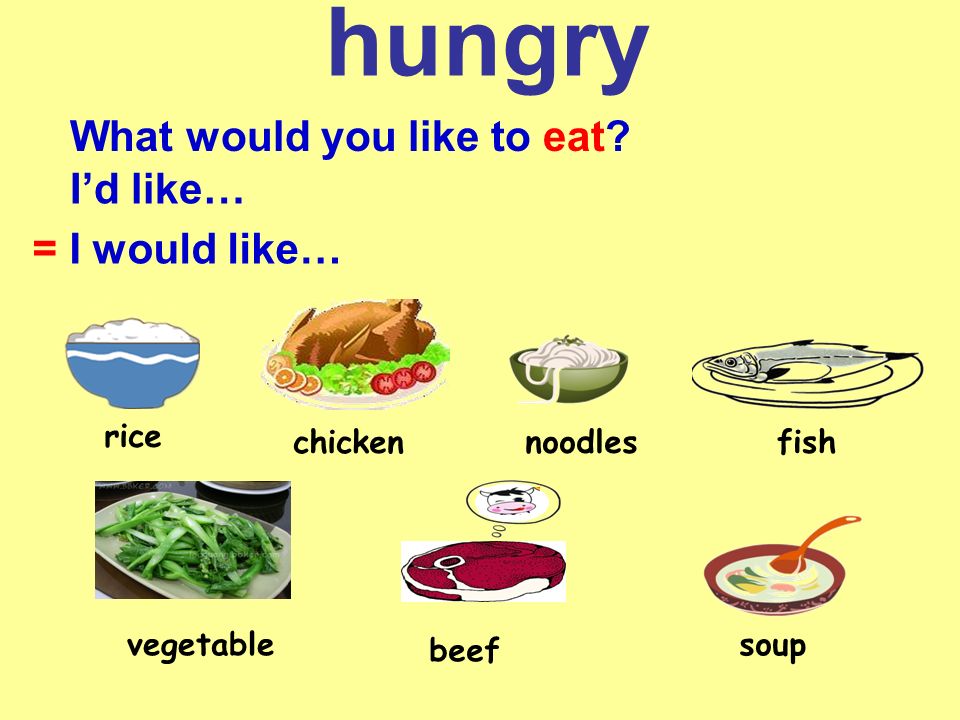 Have your child choose some vegetables and fill the pita with them. nine0003
Have your child choose some vegetables and fill the pita with them. nine0003
Vegetables are rich in important vitamins and minerals, and many children do not eat enough of them.
Here's to you: 6 evidence-based health benefits of mahana
11. Fruit smoothie
Fruit smoothie is a good way to pack lots of nutrients into a small snack.
You can also add vegetables to smoothies. Thanks to the sweetness of fruits, your child may not even realize that they are there.
Use whole, fresh ingredients and avoid fruit juices that are high in sugar. nine0003
There are countless combinations you can try, but here is one smoothie recipe to get you started:
Berry Smoothie
Ingredients for 4 servings:
- 2 cups (60 grams) fresh spinach
- 2 cups (300 grams) frozen berries
- 1 cup (240 ml) plain yogurt
- 1 cup (240 ml) whole milk or almond milk
- 1 tablespoon (20 grams) honey
Add all ingredients to blender and blend until smooth. nine0003
nine0003
12. Hard-boiled eggs
Store hard-boiled eggs in the refrigerator for a quick, high-protein treat.
Eggs are highly nutritious and a great snack for kids. They provide high quality protein and several vitamins and minerals, including vitamin B12, riboflavin, and selenium.
They also contain lutein and zeaxanthin, two carotenoids that are good for eye health.
In addition, they are one of the best food sources of choline, a vitamin that is essential for proper brain development. nine0003
13. Banana Oatmeal Cookies
Homemade banana cookies are a healthy snack for kids that taste like a treat.
These cookies get their sweetness from mashed bananas, not refined sugar.
Refined sugars have been linked to health problems in children, such as an increased risk of heart disease, childhood obesity, and type 2 diabetes.
Banana Oatmeal Cookie Recipe
Ingredients:
- 3 ripe bananas, mashed
- 1/3 cup (80 ml) coconut oil
- 2 cups (160 grams) rolled oats
- 1/2 cup (80-90 grams) mini chocolate chips or dried fruit
- 1 teaspoon (5 ml) vanilla
Mix all ingredients in a bowl. Spoon the cookie mixture onto a greased sheet and bake for 15-20 minutes at 350°F (175°C).
Spoon the cookie mixture onto a greased sheet and bake for 15-20 minutes at 350°F (175°C).
14. Raisin snack bags
Raisins are dried grapes. They have almost all the nutrients found in fresh grapes, but in a smaller package. nine0003
Raisins contain a decent amount of iron, a nutrient many children lack and needed to transport oxygen throughout the body.
We offer you: Good carbs, bad carbs - how to make the right choice
What's more, raisins pack plant compounds, including oleanolic acid, which can protect your child's teeth from cavities by preventing bacteria from adhering to them.
Raisin snack bags are a light snack that is much healthier than most convenience foods. nine0003
15. Turkey and avocado roll
Turkey and avocado roll is an easy and healthy snack.
Turkey is a good source of protein, which is responsible for building and repairing tissues in your body. It's also very filling, which can help kids feel full between meals.
Avocados are full of heart-healthy fats, as well as fiber, folate, pantothenic acid, potassium, several antioxidants, and vitamins C and K.
To make a turkey and avocado roll-up, first peel and cut the avocado. Dip slices lightly in lime juice to keep them from browning. Wrap one piece of turkey around each avocado slice. nine0003
16. Baked sweet potato fries
Sweet potatoes are one of the richest sources of beta-carotene, a nutrient that your body can convert to vitamin A. It promotes eye and skin health.
Homemade, baked sweet potato fries are a nutritious alternative to french fries.
Sweet potato fries recipe
Ingredients:
- 1 fresh sweet potato
- 1 teaspoon (5 ml) olive oil
- Sea salt
Peel and cut sweet potatoes. Dip potatoes in olive oil and sprinkle with sea salt. Bake on a cookie sheet at 425°F (220°C) for 20 minutes.
17. Cucumbers
Pickled cucumbers are cucumbers that have been fermented in salt and water.
They are a good source of vitamin K, and some foods also contain probiotic bacteria that are good for the digestive system. nine0003
Cucumbers that contain vinegar do not contain probiotics, so look in the cold section of the grocery store for cucumbers with live cultures.
We suggest you: How many bananas should you eat per day?
Avoid sweet pickles that are high in added sugars.
18. Cabbage Chips
Cabbage is considered a superfood because it is high in nutrients but low in calories. Children can get all the vitamins A, C and K they need in a day from just 1 cup (65 grams) of kale. nine0003
While most kids won't want to eat these leafy greens raw, kale chips are a delicious snack that can change your child's mind.
Recipe for chips from Keil
Ingredients:
- 1 A small block of cabbage
- 1 tablespoon (15 ml) olive oil
- 1 teaspoon of garlic powder
- 1/4 teaspoon of salt 9000 9000 then wash and dry thoroughly.
- 1 cup (80 grams) oatmeal
- 1/3 cup (115 grams) unfiltered honey
- 1/2 cup (125 grams) almond butter
- 1/2 cup ground flax seeds (55 grams) or whole chia seeds (110 grams)
- 1 teaspoon (5 ml) vanilla
- 1/2 cup (80 grams) dried fruit
- cheddar cheese and thinly sliced apples
Offer your children whole, unprocessed snacks instead of packaged snacks.
Topics
Snack in baby food - Encyclopedia Baby food
General
Levchuk Victoria © Snack in baby foodSnack in baby food must be present.
 After all, a child, unlike an adult, cannot withstand more than 2 hours without eating. Moreover, they have a faster metabolism, and more energy is spent, which is why it is so important to fill the child's nutritional needs in time. nine0003
After all, a child, unlike an adult, cannot withstand more than 2 hours without eating. Moreover, they have a faster metabolism, and more energy is spent, which is why it is so important to fill the child's nutritional needs in time. nine0003 Intermediate meals during the day, along with breakfast, are perhaps the most important meal in a child's diet. Research shows that organizing snacks at home can help you avoid unnecessary calories and saturated fat, sugar, and salt. When we talk about a healthy diet for a child, this means that all the meals of the day are put in order, even those that come in between main meals.
As for the quality of a healthy snack, it should include basic ingredients such as carbohydrates and proteins, as well as trace elements such as calcium, which will provide the necessary energy for the child and at the same time contribute to his good development. nine0003
Examples of healthy snacks in baby food:
- 1 milkshake with semi-fat milk (up to 2% fat) and fresh fruit, whipped in a blender and with 1 tablespoon of honey
- 1 toast or 1 boiled cheese pie turkey and 1 fruit
- 1 fruit salad with honey and 1 yogurt (2%)
- 1 glass of milk with cereal bar and honey
- 1 muffin
brings the desired results, it is helpful to provide a few more tempting solutions for the child, but cook them at home from healthy foods.
 Cooked homemade cookies or cake from familiar ingredients can be given to the baby two or three times a week. If your child likes croissants or chocolate chip cookies, then you can allow him to eat them as a snack once a week, but be sure to add something healthy to his favorite treats, such as fruit or milk. nine0003
Cooked homemade cookies or cake from familiar ingredients can be given to the baby two or three times a week. If your child likes croissants or chocolate chip cookies, then you can allow him to eat them as a snack once a week, but be sure to add something healthy to his favorite treats, such as fruit or milk. nine0003 For now, it is important to note that most parents find it easier to buy snacks in the store than to prepare them themselves. But it is necessary to consider what we invest in the future health of our child. Therefore, if time is limited, then it is worth considering simple snacks, like a whole fruit or a cereal bar. In kindergartens, a snack usually consists of fruits, children get an apple or an orange for breakfast, etc. This is a good snack, although I would definitely add cereal bars or cookies to an apple, as this fruit provokes a desire to have a snack after 20 minutes. nine0003
It is also important to properly organize the time of the whole family. If it is not possible to prepare good homemade snacks for school for a child in the morning, then this issue must be resolved in the evening.
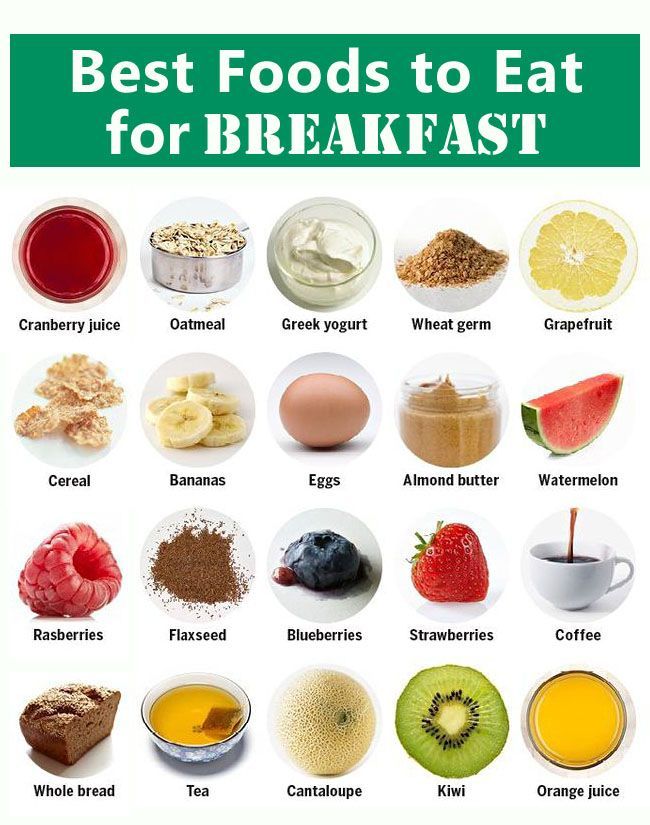
 Dip it in olive oil and seasonings. Spread it out on a cookie sheet and bake at 350°F (175°C) for 10-12 minutes. Watch your oven carefully, as cabbage can burn quickly. nine0003
Dip it in olive oil and seasonings. Spread it out on a cookie sheet and bake at 350°F (175°C) for 10-12 minutes. Watch your oven carefully, as cabbage can burn quickly. nine0003 19. Carrot sticks and hummus
Most kids love to dip, and offering them a healthy dip is a great way to get them to eat vegetables.
Hummus is one of the options. This is a thick, creamy chickpea spread that contains fiber, folate, and a host of antioxidants.
Hummus is delicious with carrot sticks or other raw vegetables.
20. Energy Balls
Energy Balls taste like cookie dough but are made with wholesome, nutritious ingredients. nine0003
You can make these snacks with either ground flax seeds or whole chia seeds, both sources of fiber, protein and antioxidants.
They are a healthier alternative to commercial granola bars, which are usually high in sugar and artificial ingredients.
Energy ball recipe
Ingredients:
bowl. Roll the mixture into small balls and refrigerate. For a pampering treat, replace the dried fruit with chopped dark chocolate chips.
Roll the mixture into small balls and refrigerate. For a pampering treat, replace the dried fruit with chopped dark chocolate chips.
We offer you: Are protein bars good for you?
21. Bell peppers and guacamole
Bell peppers are naturally sweet and very nutritious. They are a good source of fiber, vitamin C, and carotenoids. nine0003
Carotenoids are plant compounds with many health benefits, including support for eye health.
Very delicious bell pepper dipped in guacamole - creamy avocado puree spread.
22. Whole grain crackers and nut butter
You can make your own sandwich crackers by spreading a little nut butter, such as almond butter, on whole grain crackers. This snack has a good balance of protein, carbohydrates and fat.
However, choose your children's crackers carefully. Many crackers are full of refined flours, hydrogenated oils, and even sugar.
Instead, choose crackers made with 100% whole grains and seeds.
23. Fruit Slice
Fruit Slice is a convenient and healthy snack for children.
Most fruits contain fiber and important nutrients such as potassium and vitamins A and C.
Bananas, apples, pears, grapes, peaches, and plums are examples of fruits that can be used for take-and-go snacks. nine0003
Cut fruits like pineapple, cantaloupe and mango into pieces and store them in small containers for easy snacking.
24. Quesadilla with peanut butter and banana
Quesadilla made with peanut butter and banana is healthy and delicious.
Peanut butter is a great way to give your child a source of healthy fats and some protein.
Bananas are a good source of potassium, vitamin B6 and fibre.
This easy recipe combines peanut butter and bananas for a delicious snack. nine0041 9 low-carb cereals (and a few high-carb ones to avoid)
25. Olives
Olives are rich in healthy fats and packed with powerful antioxidants that protect your body from damaging molecules called free radicals.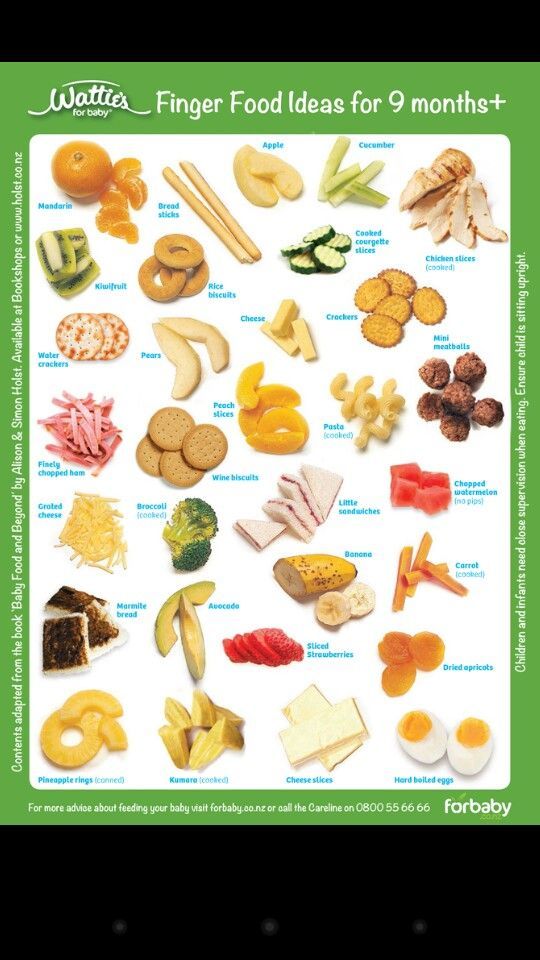
Olives are soft and easy to eat by children. Make sure you buy pitted olives for the kids or remove the pit before serving.
Different varieties have their own taste. If you've never offered olives to your child before, start with mild-tasting black olives. nine0003
26. Apple and peanut butter dip
Apple slices and peanut butter are a delicious combination.
Apple skin contains pectin, a soluble fiber that feeds friendly gut bacteria and improves digestive health.
Peanut butter has a thick consistency that may be difficult for children to use as a dip.
Mix some plain, full-fat yogurt with two tablespoons (30 grams) of peanut butter to make a smooth, creamy apple slice poppy. nine0003
27. Frozen fruit popsicles
Frozen fruit popsicles are an appetizing treat for children and really quite healthy.
Most store bought ice creams are full of artificial flavors and refined sugar or high fructose corn syrup.
But you can easily make your own and your kids might like to help.
Puree frozen fruit or berries and a small amount of fruit juice in a blender. Pour the mixture into ice cream molds or small plastic cups. Cover with foil and insert the popsicle stick into the ice cream through the foil. Freeze overnight. nine0003
28. Half of a sandwich
Sandwiches do not have to be only at mealtimes. Half a sandwich can also be a healthy snack for kids.
To make a healthy sandwich, start with whole grain bread, choose a protein source, and include a fruit or vegetable whenever possible.
We offer you: Is peanut butter good or bad for your health?
Here are some examples of healthy sandwich combinations:


